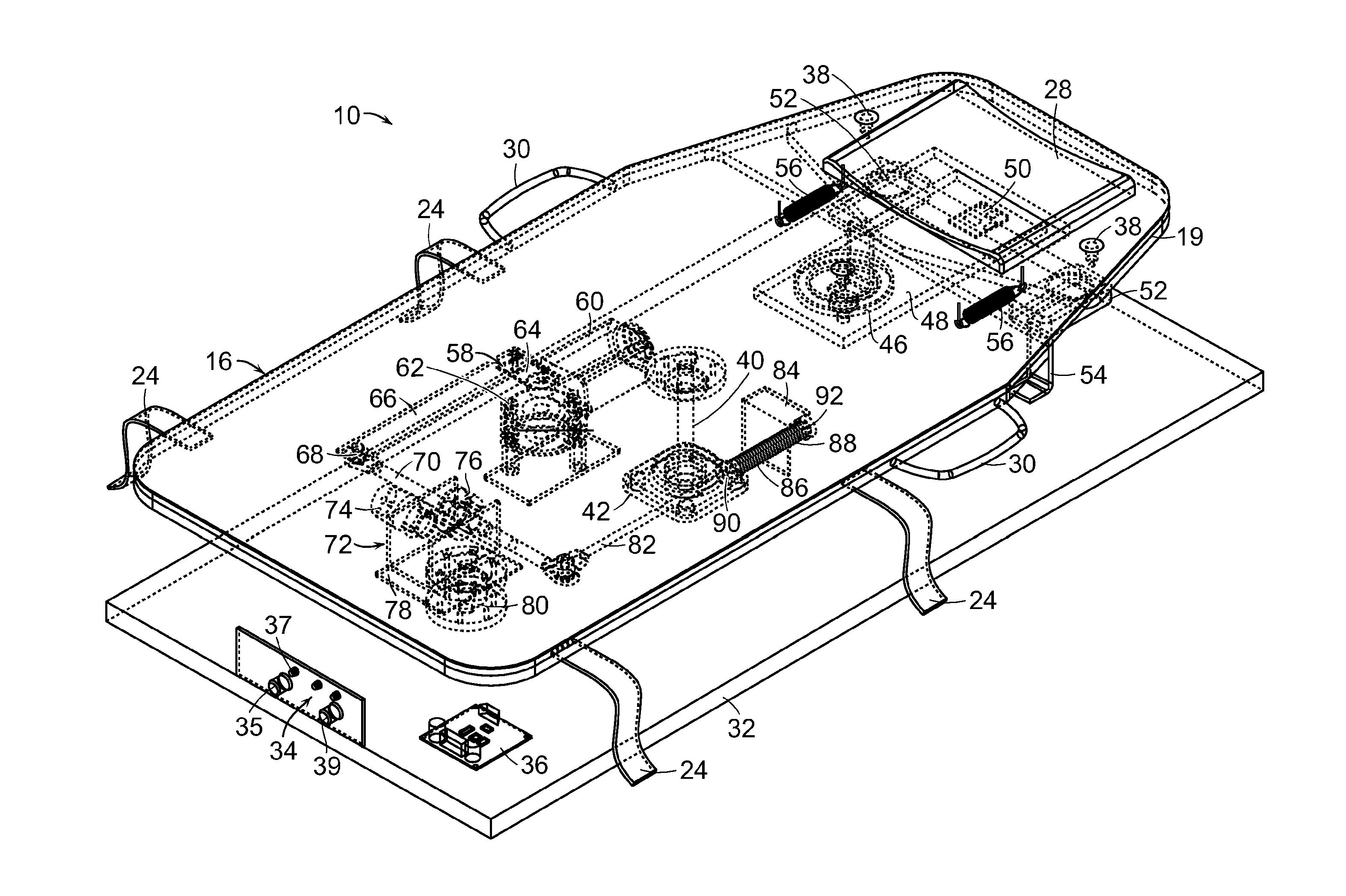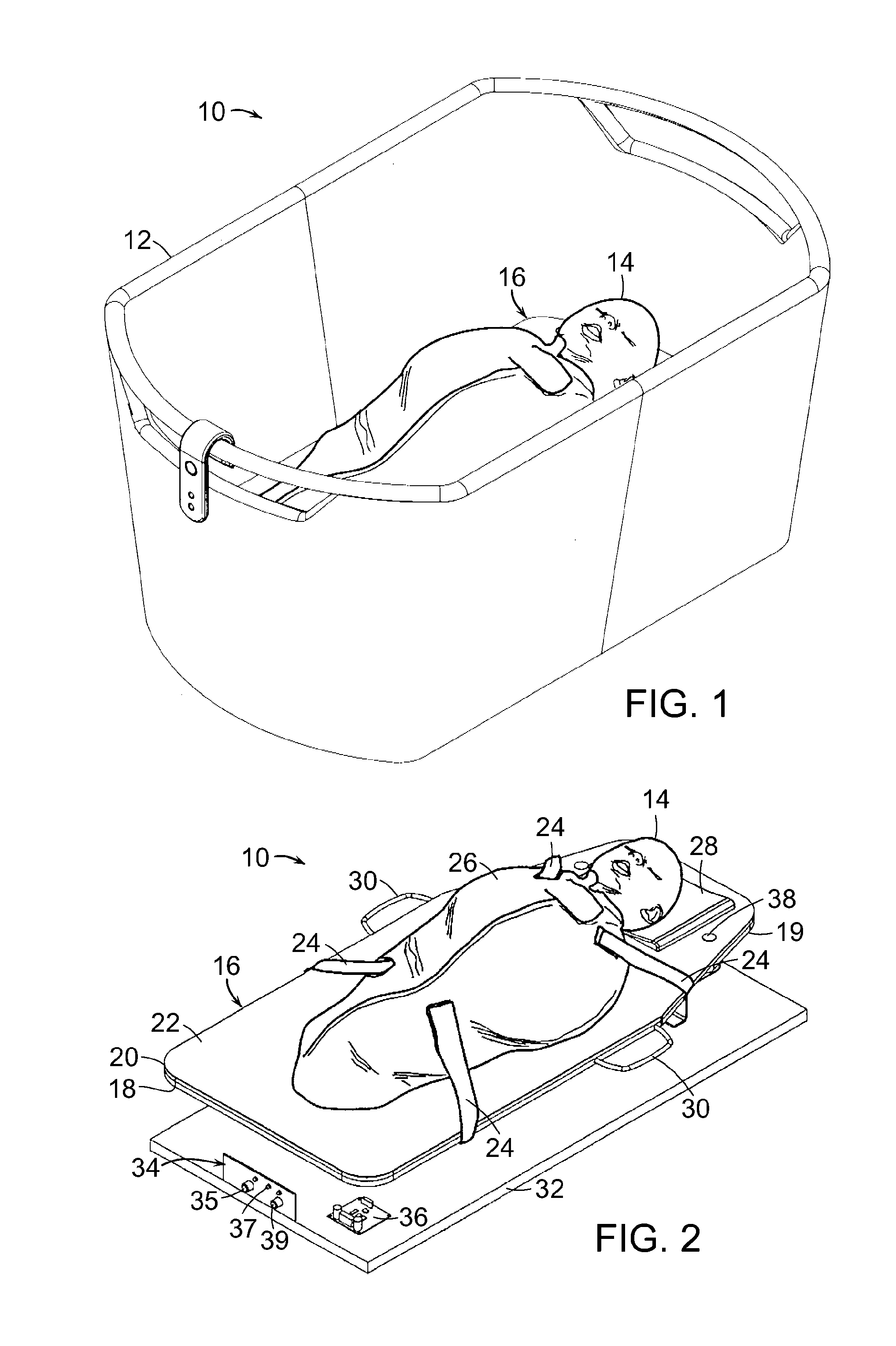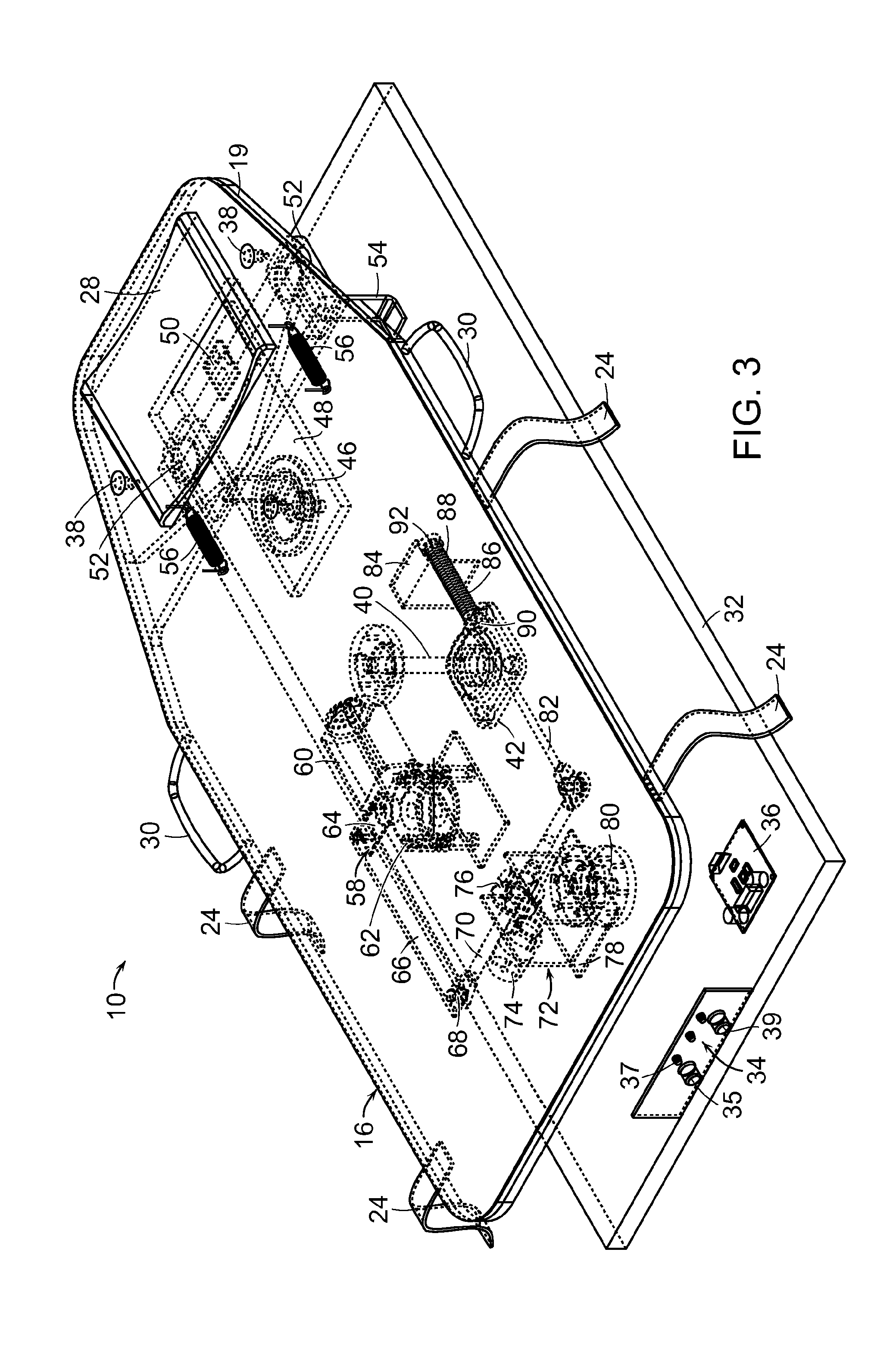Infant calming/sleep-aid device and method of use
a technology for infants and parents, applied in the field of infant calming/sleep-aid devices and methods of use, can solve the problems of parents' frustration, anger towards the baby, poor infant sleep, etc., and achieve the effects of reducing irritability, improving infant sleep, and reducing irritability
- Summary
- Abstract
- Description
- Claims
- Application Information
AI Technical Summary
Benefits of technology
Problems solved by technology
Method used
Image
Examples
Embodiment Construction
[0038]In one embodiment of the invention, shown in FIGS. 1 through 6, infant calming / sleep-aid device 10 includes enclosure 12 about infant 14. Enclosure 12 surrounds main moving platform 16. As can be seen in FIG. 2, main moving platform 16 includes base 18, moving head platform 19, padding 20 and cloth covering 22. Swaddle fastening straps 24 extend from main moving platform 16 for securing infant 14 in suitable swaddling clothes 26. Head pad insert 28 supports the head of infant 14. Preferably, head pad insert 28 includes a gel in order to reduce the risk of plagiocephaly. Handles 30 extend laterally from main moving platform 16. Main moving platform 16 is supported and rotatable about a main support shaft (not shown) that is fixed to rigid base 32. Control panel 34, which includes speed control knobs 35, status lights 37 and controls 39 for microphone 38. Rigid base control electronics 36, include drive electronics of infant calming / sleep-aid device 10.
[0039]In another represent...
PUM
 Login to View More
Login to View More Abstract
Description
Claims
Application Information
 Login to View More
Login to View More - R&D
- Intellectual Property
- Life Sciences
- Materials
- Tech Scout
- Unparalleled Data Quality
- Higher Quality Content
- 60% Fewer Hallucinations
Browse by: Latest US Patents, China's latest patents, Technical Efficacy Thesaurus, Application Domain, Technology Topic, Popular Technical Reports.
© 2025 PatSnap. All rights reserved.Legal|Privacy policy|Modern Slavery Act Transparency Statement|Sitemap|About US| Contact US: help@patsnap.com



